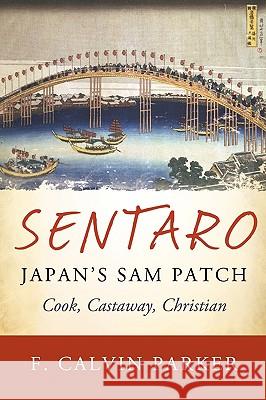Sentaro, Japan's Sam Patch: Cook, Castaway, Christian » książka
Sentaro, Japan's Sam Patch: Cook, Castaway, Christian
ISBN-13: 9781440198380 / Angielski / Miękka / 2010 / 220 str.
Sentaro was one of seventeen Japanese mariners rescued from the storm-battered junk Eiriki-maru, taken to San Francisco, then consigned to the Perry expedition for repatriation. The U.S. government had noted the castaways' potential usefulness as negotiating chips for persuading Japan to end its centuries-old isolation from the outside world. But when Commodore Perry transferred his flag to the Susquehanna for the dangerous foray into forbidden Japanese waters, Sam Patch, as Sentaro was now known, was the only one of the seventeen castaways still under U.S. naval jurisdiction. Indeed, he was the sole Japanese to accompany the expedition that concluded an historic treaty of friendship between the United States and Japan.
Japanese officials tried to persuade Sam to accept repatriation, but he chose to keep his job as a landsman in the U.S. Navy. The Mississippi brought Sam to New York, where he returned to civilian life under the patronage of Jonathan Goble, a shipmate discharged from the marines. A pious Baptist with a flawed character, Goble regarded Sam as a potential asset to his future missionary work in Japan. As Goble's protege, Sam gained a smattering of English education in the academy of what is now Colgate University but resisted efforts to convert him to the Christian faith. Three years passed before he submitted to an icy-creek baptism and emerged as the first known Japanese Baptist. In 1860, despite mistreatment at the hands of his patron, Sam accompanied Jonathan and Eliza Goble to Japan as helper and cook.
The Gobles, lacking adequate financial support from America, turned Sam over to Robbins and Elizabeth Brown, Dutch Reformed Church missionaries with the resources to support him. The Browns released Sam to their younger colleagues James and Margaret Ballagh, who became so dependent on their "faithful but inefficient servant" that they brought him along when Margaret, neurotic and pregnant, required medical treatment in America.8 Sam later worked as cook for E. Warren Clark, a science teacher employed by the Japanese government, and part-time driver for Nakamura Masanao, a renowned literary scholar. When Sam died of beriberi in 1874, Clark and Nakamura buried him in Nakamura's family plot at Hondenji, a Buddhist temple in Tokyo."











